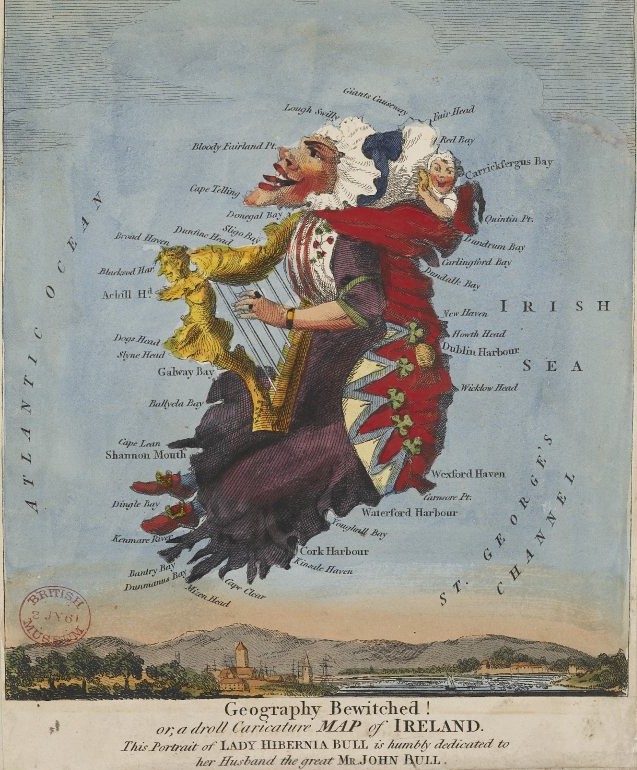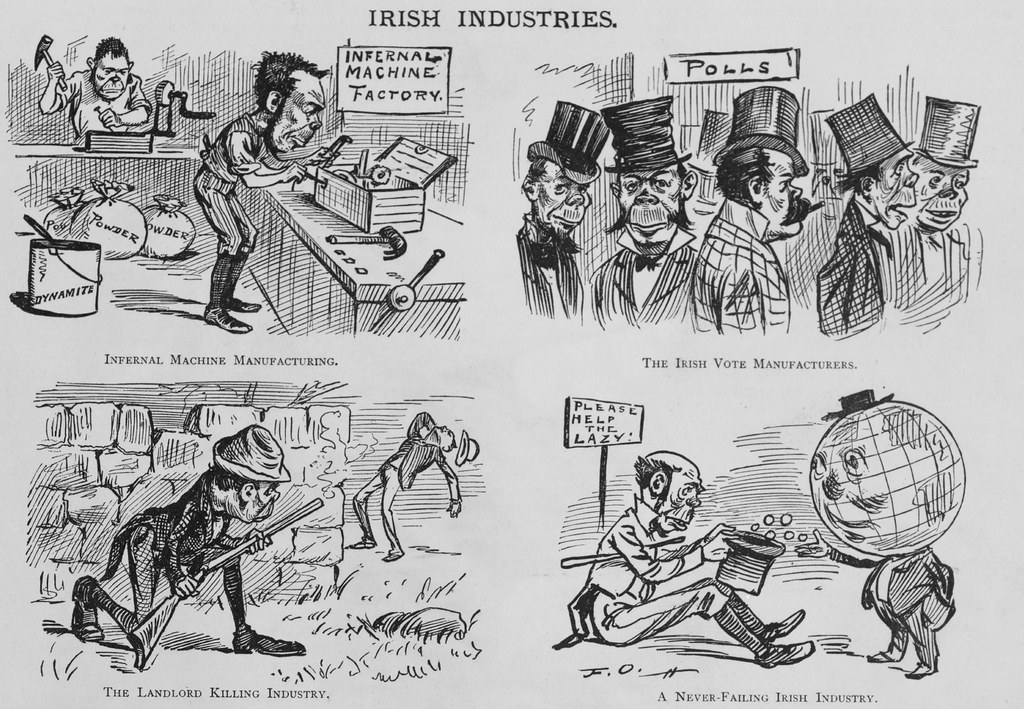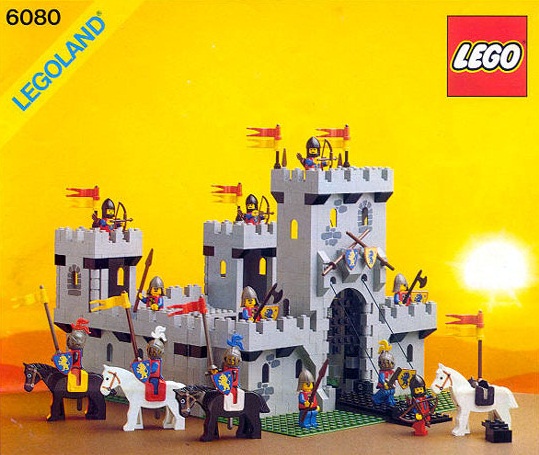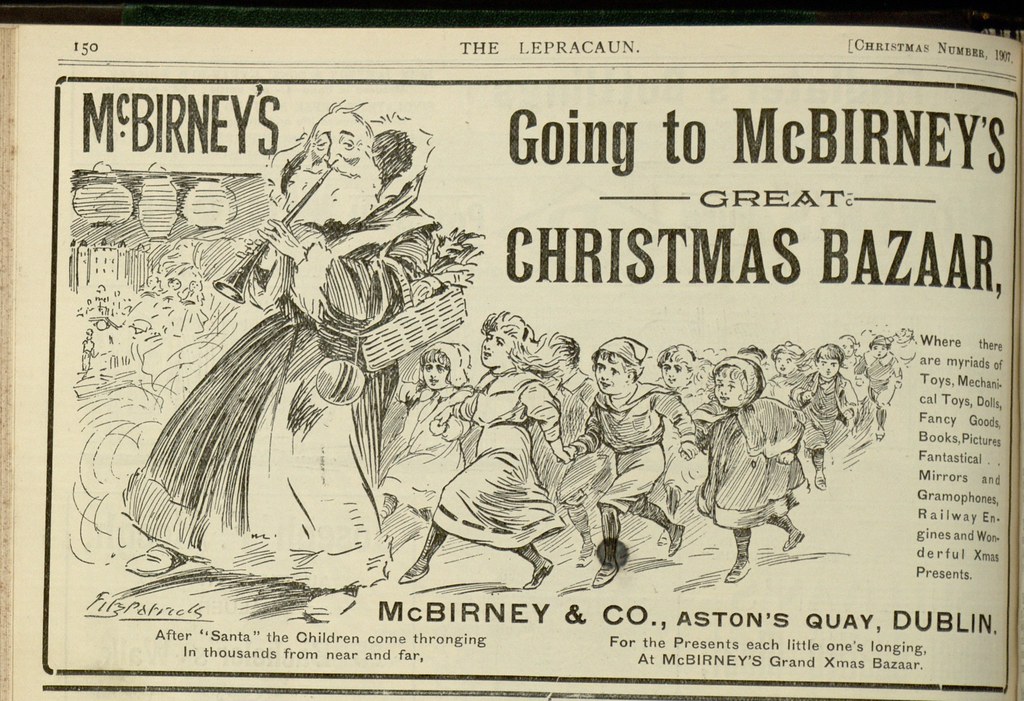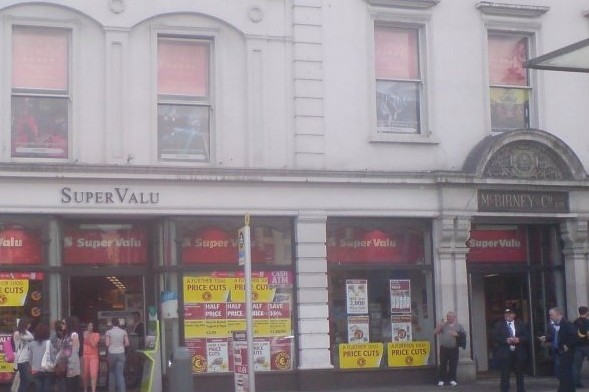Here's a selection of the posters used to entice Irishmen into joining the British forces in the Great War (1914-1918). Although Irish attitudes to the war were mixed, many Irishmen enlisted, with a total of 208,000 serving during that period. Unlike in Britain, conscription was never introduced in Ireland. To what extent these appeals to manhood, peer pressure, heroism, and fear did their job is hard to say but they make for interesting and varied ephemera of those years. The Lusitania one is probably my favourite of this lot. Over on the National Library of Ireland's flickr account there's an interesting photo of a recruitment poster on display in a shop window in Waterford in early 1915.
Thursday, January 31, 2013
"Have you any women folk worth defending?" - Irish recruitment posters (1914-1918)
Here's a selection of the posters used to entice Irishmen into joining the British forces in the Great War (1914-1918). Although Irish attitudes to the war were mixed, many Irishmen enlisted, with a total of 208,000 serving during that period. Unlike in Britain, conscription was never introduced in Ireland. To what extent these appeals to manhood, peer pressure, heroism, and fear did their job is hard to say but they make for interesting and varied ephemera of those years. The Lusitania one is probably my favourite of this lot. Over on the National Library of Ireland's flickr account there's an interesting photo of a recruitment poster on display in a shop window in Waterford in early 1915.
Wednesday, January 30, 2013
An early critic of NORAID
Here's another gem from Puck Magazine, again from 1881 and, as in the previous post, illustrated by Frederick Burr Opper. It shows another simian Irishman floating across the sea in a hat with a pipe for a mast. The sail says "Money wanted fur to free the ould country!" The poor mariner, whose coat tails say "Land League" and "Free Ireland" is proclaiming "Wonst more, me byes, for Ould Oireland - the land of divilment and distriss." So nothing much has changed in the intervening 132 years. He's sailing towards Michigan and its "American Greenback Crop". Again, plus ça change.
Brendan Behan's Dublin (1966)
Brendan Behan's Dublin is a short documentary made a couple of years after the man himself died. It's a slightly surreal endeavour as we have Ray McAnally playing the disembodied voice of Behan, explaining his family history and giving a potted history of the city itself. Much of this commentary seems to have been gleaned from interviews with Behan. The documentary also has short interviews with members of his family, his widow, his mother and father, and there's plenty of beautifully shot footage of contemporary Dublin with the likes of Dublin Zoo and Moore Street getting a look in. It also features a fantastic soundtrack by the Dubliners. Directed by Norman Cohen and scripted by Carolyn Swift. Its only significant flaw to my mind is that in parts the "Behan" narration is lost among diegetic sounds of the footage.
If that hasn't satisfied your hunger for footage of 1960s Dublin, feast your eyes on "See You At The Pillar," a British Pathé tourist film from about the same time.
If that hasn't satisfied your hunger for footage of 1960s Dublin, feast your eyes on "See You At The Pillar," a British Pathé tourist film from about the same time.
Monday, January 28, 2013
Geography Bewitched! Or A Droll Caricature Map Of Ireland (1793)
This is a hand coloured etching from 1793 or thereabouts. It depicts Ireland as Lady Hibernia Bull and "is humbly dedicated to her husband the great Mr. John Bull". The British Museum has a couple of examples of it. There's also this companion piece of England & Wales.
Sunday, January 27, 2013
The Metal Man, Rosses Point, Co. Sligo.
The Jack B. Yeats book linked in the previous post also yielded this curious illustration. It's really reminiscent to me of a Winsor McCay illustration which might just be a reflection of the style of the times. When I saw this illustration I wondered what the hell was I looking at. I thought it was some fellow on a sea pillar acting the maggot to his friends but then I saw it was called The Metal Man. A quick google later and I found out that Ireland has not one but two metal men (not to be confused with metallers, of which there are many). The one illustrated stands at Rosses Point, Co. Sligo and has done since 1821. You can see him here. His twin stands atop a pillar guarding Tramore, Co. Waterford. You can see him and find out more about him here. I have no idea how well known either entity is but it's the first I'd ever heard of them seeing that illustration so if they are well known please excuse my Pale insularity.
A Japanese Toy In Mayo by Jack B. Yeats (1912)

This charming illustration by Jack B. Yeats is one of many to be found in his book of illustrations Life In The West Of Ireland (1912) which can be accessed in its entirely at the Villanova University Digital Library here. The illustrations vary in style quite a bit from jovial group scenes that remind me a bit of the Giles cartoons of a later era to more serious studies and landscapes. Sure have a look yourself, I doubt you'll regret it.
Irish Industries, Cartoon (1881)
This rather unflattering illustration appeared in Puck magazine in November 1881. Puck was a US satirical periodical that was popular from the 1870s up until 1918. The magazine had a distinct anti-Irish point of view which was not uncommon at the time in either North America or Britain. As with similar anti-Irish illustrations of the era by the likes of Frederick Opper, Thomas Nast and the illustrators who worked for Punch magazine in Britain, the Irish are depicted with distinctly simian features. In each of the panels the lads are up to no good. From bomb making to vote rigging and murder to begging, the only industries the Irish excel at are nefarious ones. Despite the nastiness I think it's a class illustration. As with many of these cartoons it's hard to deny the draughtmanship even if the message is disgusting. I especially like the globe character. He looks a bit like he's not too long ago been down on his luck himself. He also looks like the type of globe who enjoys a pint and a natter the odd time.
As this and similar illustrations attest to anti-Irish prejudice existed in the United States in the 19th Century especially as regards Irish-dominated political institutions such as Tammany Hall, the role of the Catholic Church in American society, and agrarian unrest back in Ireland. It's nowadays hotly debated as to the extent of real prejudice and marginalisation of Irish migrants to the US and their descendents. Irish festivals across America thrive on the idea of exceptional Irish victimhood and metal-cast signs with the slogan "No Irish Need Apply" are a popular giftshop item at these events. Despite the popularity of such signs nowadays research has found few historical instances of the slogan's use in job adverts during the period. That's not to say that such signs never existed just that they were never as common as the folk memory suggests. For an engaging look at the changing fortunes of the Irish in America this book is worth a look.
As this and similar illustrations attest to anti-Irish prejudice existed in the United States in the 19th Century especially as regards Irish-dominated political institutions such as Tammany Hall, the role of the Catholic Church in American society, and agrarian unrest back in Ireland. It's nowadays hotly debated as to the extent of real prejudice and marginalisation of Irish migrants to the US and their descendents. Irish festivals across America thrive on the idea of exceptional Irish victimhood and metal-cast signs with the slogan "No Irish Need Apply" are a popular giftshop item at these events. Despite the popularity of such signs nowadays research has found few historical instances of the slogan's use in job adverts during the period. That's not to say that such signs never existed just that they were never as common as the folk memory suggests. For an engaging look at the changing fortunes of the Irish in America this book is worth a look.
Saturday, January 26, 2013
Royal Triumphal Archway, Leeson St. Dublin, 1900: Update
Having found a larger, clearer version of the first painting from the 1821 visit it's clear that Haverty is depicting the same spot as Turner de Lond. If anyone has any idea why there's a disparity between the two archways I'd love to know so please leave a comment.
Royal Triumphal Archway, Leeson St. Dublin (1900)
Back in the day, whenever a monarch deigned to visit Dublin they would construct these temporary archways for that much-needed, added pomp. A lot of papier mache and sticky back plastic was used to create this one. The overall effect reminds me of the Lego castle sets I used to covet so much as a child.
What I find most interesting about this one is that I'm pretty sure it features in the British Pathé footage below from Queen Vic's visit. When I first saw this clip I racked my brains trying to figure out where it had been filmed, thinking it must be one of the gates of Phoenix Park. It was only when I read about the Royal Triumphal Archway of 1900 here that the penny dropped. Archiseek also contains information on other archways such as that for the royal visit of 1903, and the one constructed at Baggot Street for the royal visit of 1849.
Back in 1821, King George IV's visit to Dublin was celebrated in similar style as can be seen in these paintings by Joseph Patrick Haverty and William Turner de Londe respectively although we have a little mystery. I'm not sure why but the archways depicted differ quite a bit from one another, the first one looking decidely flimsier and less solid than the other one. They both appear to be in roughly the same place, where the Parnell Monument currently stands at the top of O'Connell Street. However the first picture might be depicting a different archway somewhere else in the city which would explain the discrepancy. But if it is the same spot in both pictures either one the paintings depicts a different occasion or one of the painters just didn't know what the archway looked like. Sadly no such structure was constructed for Queen Elizabeth II's much more recent visit to the fair city of Dublin.
What I find most interesting about this one is that I'm pretty sure it features in the British Pathé footage below from Queen Vic's visit. When I first saw this clip I racked my brains trying to figure out where it had been filmed, thinking it must be one of the gates of Phoenix Park. It was only when I read about the Royal Triumphal Archway of 1900 here that the penny dropped. Archiseek also contains information on other archways such as that for the royal visit of 1903, and the one constructed at Baggot Street for the royal visit of 1849.
Back in 1821, King George IV's visit to Dublin was celebrated in similar style as can be seen in these paintings by Joseph Patrick Haverty and William Turner de Londe respectively although we have a little mystery. I'm not sure why but the archways depicted differ quite a bit from one another, the first one looking decidely flimsier and less solid than the other one. They both appear to be in roughly the same place, where the Parnell Monument currently stands at the top of O'Connell Street. However the first picture might be depicting a different archway somewhere else in the city which would explain the discrepancy. But if it is the same spot in both pictures either one the paintings depicts a different occasion or one of the painters just didn't know what the archway looked like. Sadly no such structure was constructed for Queen Elizabeth II's much more recent visit to the fair city of Dublin.
Doran's Of Marlborough Street
Here's a very pretty advertisement I found for Doran's Of Marlborough Street. It's obviously pre-1966 because the Spire is there but I've not been able to find out when the ad dates from. It looks like it was a pretty happening place at one time, "Dublin's Smartest Rendezvous". I was able to find surprisingly little about this place through the wonders of Google. I know there are and were a number of other Doran's pubs around the town so maybe this belonged to one of those same families. I don't know exactly when it stopped being a pub but it seems to have been sometime in the past decade. I have no recollection of the pub and I suspect it no longer occupied the corner unit (see modern photo below) when I was frequenting the area. I can only find a couple of anecdotal references and a couple of tiny photographs of the place when it was Doran's. Here's what the same corner looks like on Streetview, with the pub divided into several retail units and of course the Pillar long since gone and the Spire in its place. If anyone knows anything more about the joint leave a comment please.
Thursday, January 24, 2013
"Santa" in Dublin (1907)
I'm too young to remember it but McBirney's lasted all the way up until 1984. Thereafter it was the Virgin Megastore, which I recall with fondness, until the early 2000s. A SuperValu currently occupies the groundfloor of the same building. The McBirney & Co. Ltd. sign is still visible above the door.
Kodachrome Ireland
While nosing about on Flickr as I'm apt to do from time to time I came across this wonderful collection of Kodachrome snaps of Ireland in the 1950s. These colour photos were taken by a successful Irish emigré to the US who came back to Ireland a number of times in the '50s and '60s. As well as snaps of various still popular tourist attractions like the Glens of Antrim and the Giant's Causeway, the photographer took many pictures of people going about their everyday business. Most of the images depict rural Ireland at the time with only a few urban shots taken in Belfast and Derry City. The rural scenes verge on the kitsch but there's something undeniably beautiful about a lot of them. It's interesting to see colour images of rural Ireland before the bungalow blight and the McMansion mania of later years that has in some places utterly transformed the character of the Irish countryside. Alongside images of the man's Irish visit there are some of his rather unusual looking home in the US and of Cornwall as well as some taken at sea. Almost every image in the set is of some interest there are a couple which really stand out to me.
Here's one of a Traveller family alongside their old style caravan. The toddler grinning in the middle of the group would now be about 60. I sincerely hope she's still out there somewhere.
This impressionistic one of Derry City also really caught my eye. From this vantage the city looks essentially unchanged since the Victorian era. Indeed the image could be used as a cover image for a Dickens novel.
Here's one of a Traveller family alongside their old style caravan. The toddler grinning in the middle of the group would now be about 60. I sincerely hope she's still out there somewhere.
This impressionistic one of Derry City also really caught my eye. From this vantage the city looks essentially unchanged since the Victorian era. Indeed the image could be used as a cover image for a Dickens novel.
Subscribe to:
Posts (Atom)













